Mattress fabric coverings explained
Updated 2020: Once you’ve established exactly what’s in your potential new mattress the last thing you will encounter is mattress cover fabrics, also know as ‘mattress ticking’. You may be wondering “what is mattress damask or stitchbond?”. Should you really spend extra on your mattress based on the cover type?
This guide will help explain the 4 main types of mattress ticking and which ones should be avoided at all costs.
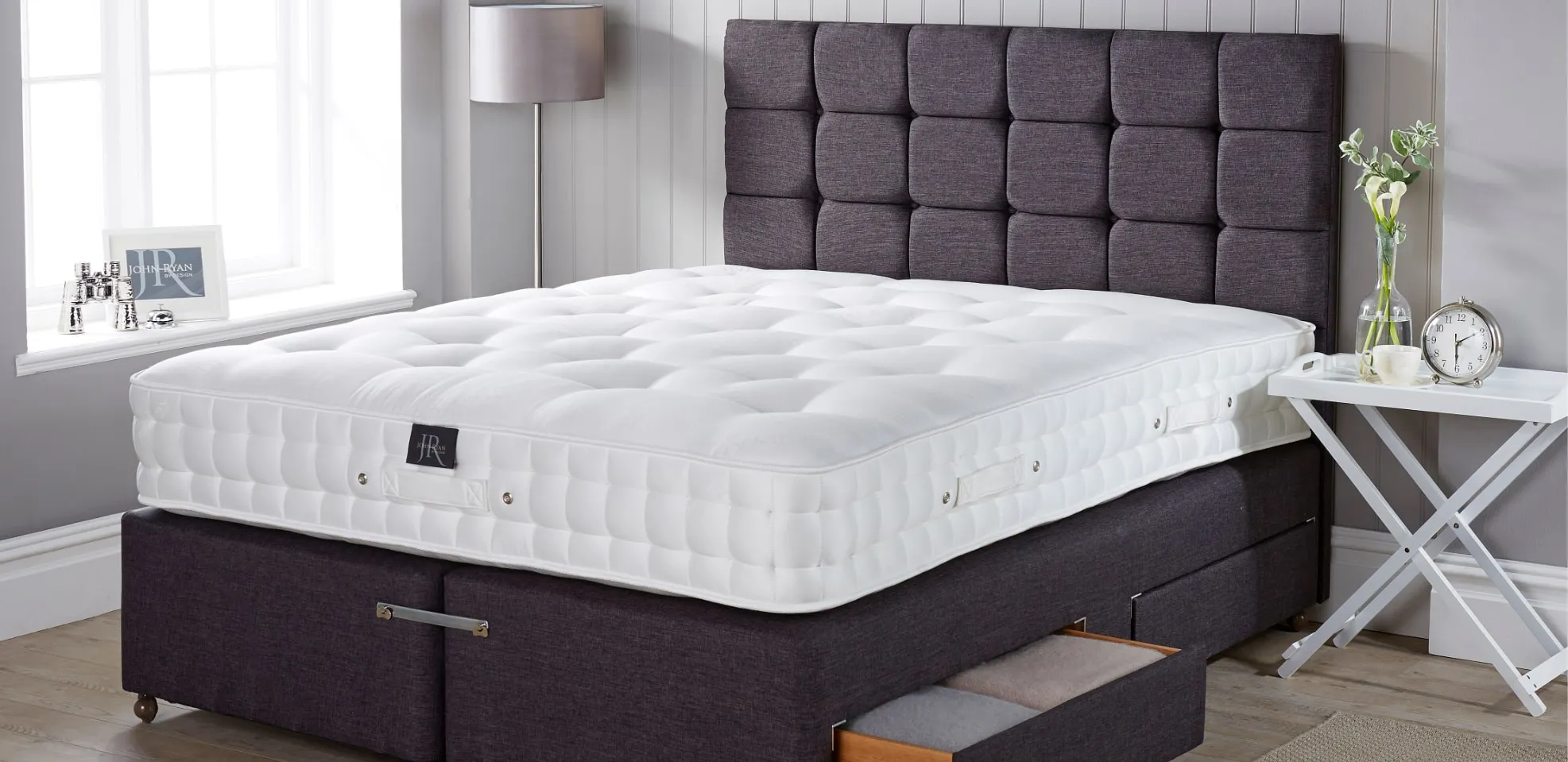
What is Mattress Ticking?
Before we start, it’s important to define what mattress ticking is. Ticking relates to the cover material used in mattress construction. It’s an industry term to describe a mattress cover fabric.
Types of Mattress Ticking
Walking around any bed shed or retailer will show you just how many weird and wonderful mattress fabrics, coverings, and upholsterings there are to confuse you. Just like upholstery fibres and spring counts, they are there to fool you into (usually) paying more for a mattress that may not be worth it. There are hundreds (if not thousands) on offer in a range of colours and unusual names. Some of these will claim to have hypoallergenic properties (usually just polyester), others have ‘cooling’ materials that will claim to keep your Memory foam furnace bed cooler (they won’t), and some even have precious metals woven into them to claim increasingly fantastic properties.
However, in reality, there are only four ‘classes’ of fabrics used for mattress ticking.
We will walk you through what each of these terms means so you can make your mind up on whether or not they’re worth the price tag when choosing a new mattress.
1. Stitchbond
This is the cheapest grade of fabric that can ethically be used on a mattress. Any lower grade will probably be sackcloth – not the ideal mattress texture you would choose. It’s rather rough to the touch and is used primarily on budget and economy mattresses. It is a printed material; patterns are not woven like damask or any other mattress fabric. It’s not very breathable or flexible due to its crude weaving method, however it is very tough and durable, but lacks the movement required for a comfortable night’s sleep.
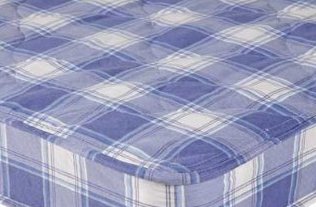
2. Damask
This is a woven fabric that will be on the majority of mattresses. It has become generally termed ‘Belgian damask’, even though many of the damask fabrics described are made outside of Belgium. There are plenty of fabric manufacturers that produce material for mattresses, each with their own speciality, and it’s unusual for a manufacturer to stick with just one fabric supplier. Most come from Europe, with France and Italy being favourite sources, but it also comes from as far afield as India and Malaysia. That said, there’s a world of difference between a cheap shiny polyester ‘Damask’ and a true woven Viscose (plant fibre) blend Damask.
A damask mattress cover is soft to the touch, breathable and is flexible for the sleeper, meaning the upholstery fibres underneath can do their job and you get the highest level of comfort.
Our John Ryan 100% Viscose fabrics are from Bekaert – one of the premier producers of mattress ticking in the world. This plant-based viscose is then treated with a plant-based fire retardancy. This means it’s entirely synthetic chemical free (sorry, just showing off a little!).
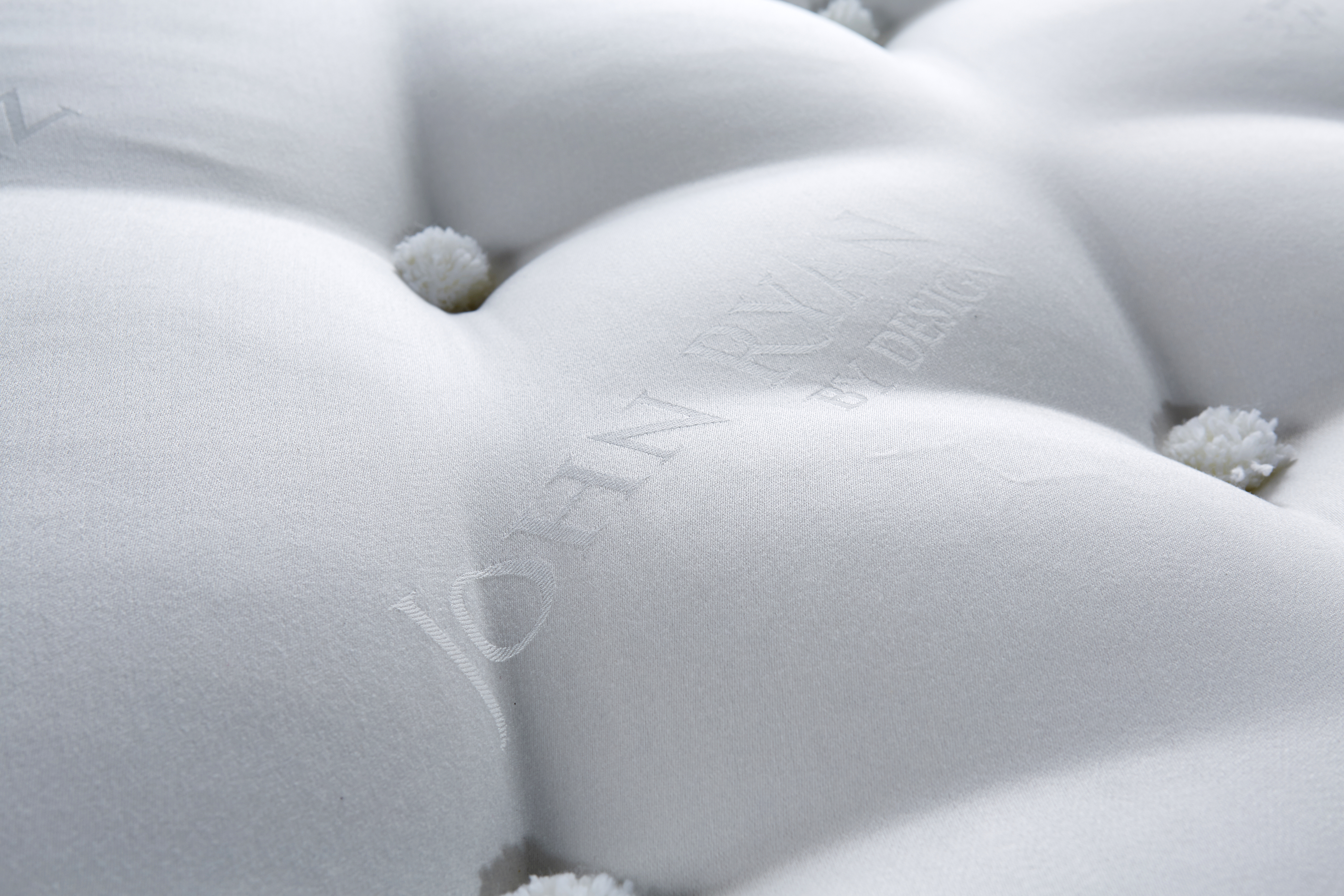
3. Knits
Although commonly referred to as a micro quilt – which is technically a finish – it is also a term of reference to the fabric (which is a knitted fabric, rather than woven one as a Damask is). These types of fabrics fall in the mid ranges. Extremely soft, their flatter surface means they’re used mainly as a covering for memory foam or latex topped mattresses. It would be unusual to have this fabric on the side panels or indeed on a matching base. A complementary damask or other woven fabric would be used for these parts. It’s also worth pointing out that this fabric, although used primarily on quilted products, can also be tufted depending on the mattress. It’s more breathable than Stitchbond, but not as much as Damask. Usually, it’s made from a polyester synthetic blend which is how it gets its stretch feel.
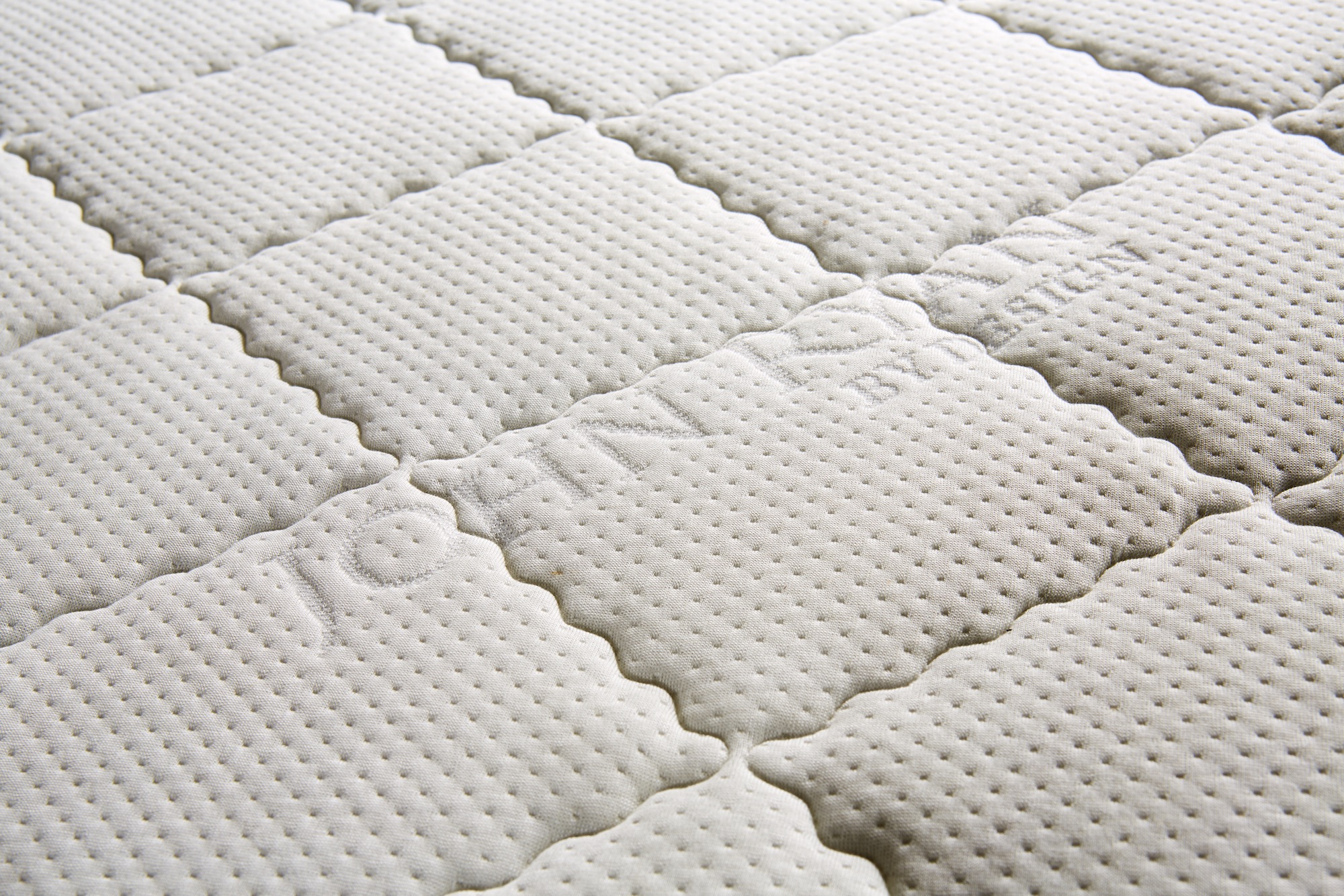
4. Specials
You need to take this term with a pinch of salt as, in most cases, these ‘special’ fabrics are simply polyester woven with other fibres that are then sold as wonder fabrics. Sometimes, this additional fibre is as low as 1%. In the past few years, a multi-million-pound business has grown in relation to fabric coverings for the mattress industry. The latest innovation soon to hit the shops are Probiotic Fabrics – such as Purotex® and Bugshield® – that actively neutralise bed bug allergens and suppress noxious bacteria. This means that, as bacteria build up on your mattress, these good bacteria within the fabric come along and kill them – supposedly. When the job is done, they lie dormant until more bad bacteria come along… though we’re not sure how exactly this works for an inert material…?

Currently, there is an absolutely huge selection of specialist mattress fabrics available to the industry. Ones impregnated with aloe vera, ylang-ylang, tea tree oil or scented with vanilla, lavender, apples etc are all designed to aid you in a restful night’s sleep. Climate control fabrics include Coolmax®, Outlast®, Climasmart® etc, plus Organic and Eco fabrics. Natural fabrics include cotton, merino wool, bamboo, health fabrics (to reduce static build-up such as stress-free), silver particles, silver fleck, copper threads and so on. These fibres are usually less breathable, akin to stitchbond in some cases. You’re far better off spending your bed budget on natural fibres inside the mattress, and opting for a Damask or knit cover rather than one of these.
Will the mattress cover keep me cool at night?
This a question we get asked all the time about fabrics such as Coolmax and the range of bed-in-a-box ‘Hypoallergenic’ covers. Let’s be clear: a Hypoallergenic cover is one that is usually polyester or that contains viscose (i.e. no animal fibre). So, by choosing Damask or Polyester, it is by very nature more hypoallergenic than say a Merino Wool blended cover, as there are no proteins to set off a reaction. In terms of Coolmax and ‘cool’ fabrics, the issue with these is there’s very little research undertaken on them. They are usually coupled with memory foam mattresses that are notorious for retaining heat. They were pretty much invented to try and get around this design flaw. You’re far better using naturally breathable bedding like cotton and picking a breathable mattress in the first place (i.e. not a foam one!).
If you really do want a memory foam mattress but don’t want the heat build-up, then look for a Natural Latex mattress instead. Alternatively, opt for a Natural Fibre Pocket Sprung mattress, which will keep you far cooler throughout the night.

As you can see just by this extremely small example, much can be made of mattress fabric coverings. The fight between textile merchants really is cut-throat, each one vying for a slice of the mattress market. Knowing this, it makes absolute sense that these magical properties of fabrics should not influence you in any way prior to selecting a mattress based on your budget.
If you find a well-constructed mattress at the right price that has a premium fabric, then consider it as icing on the cake. Always be aware of how much is made of the fabric and so little of the actual construction of the mattress. It would make sense to make sure you know all about mattress ticking, quilting methods or about fabrics to help you on your mattress journey next.
If you’re still struggling to decide which new mattress to buy, then why not give our small friendly team a call on 0161 437 4419 or drop us a message below for more help?
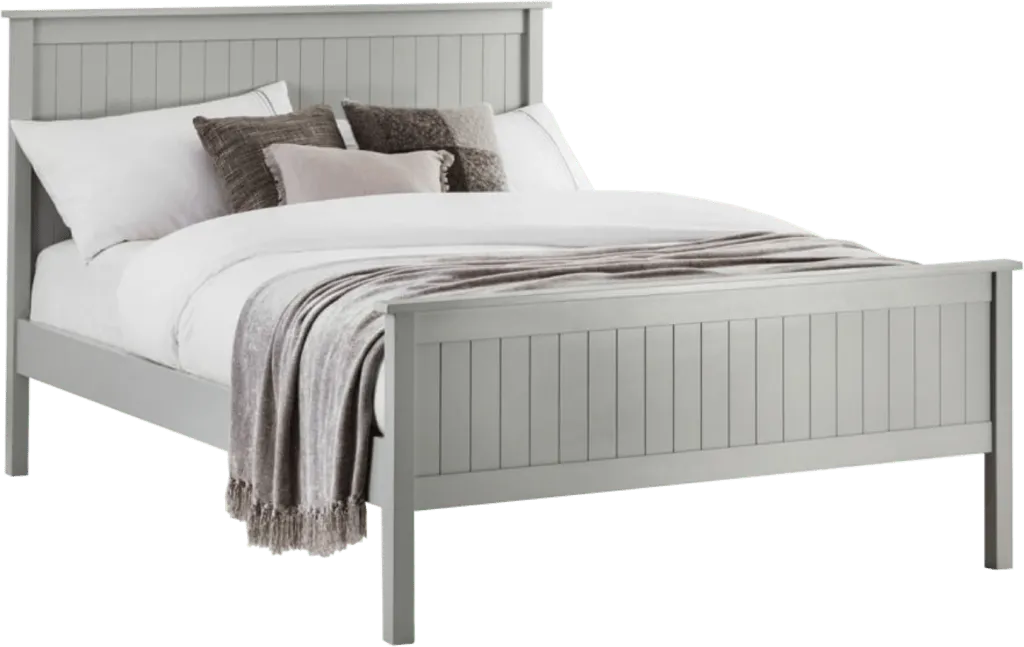
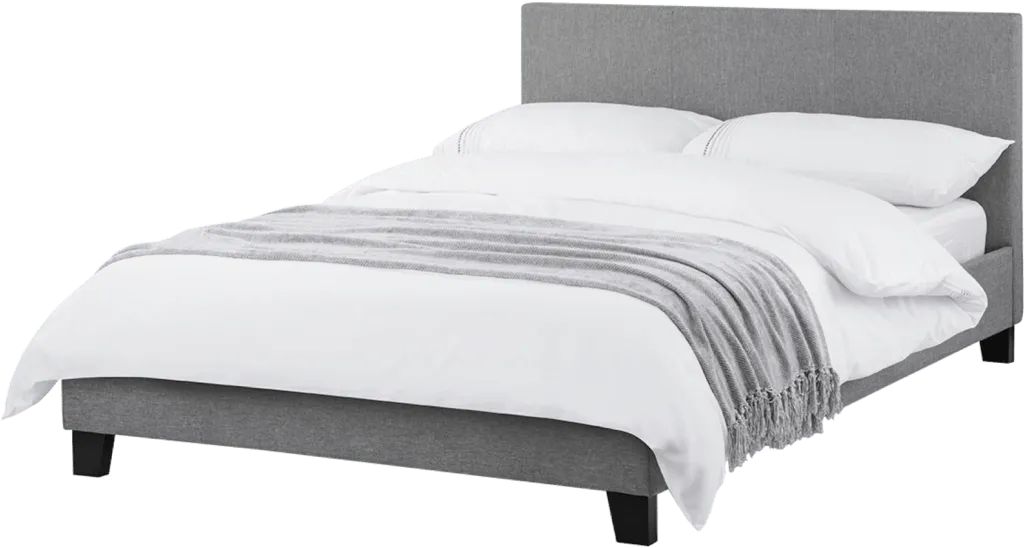
Ask us a question.
There are over 6000 questions and answers submitted by you on all questions about mattresses and bed problems. Enter a keyword such as Vi Spring, John Lewis beds, bad back or Memory Foam and see if your question has already been answered.
You can filter popular questions by the categories below. If you can’t find an answer, ask a new question below. We aim to respond to all questions within one working day.




































 Mattresses
Mattresses  Take our mattress quiz
Take our mattress quiz  Contact
Contact  About us
About us 


